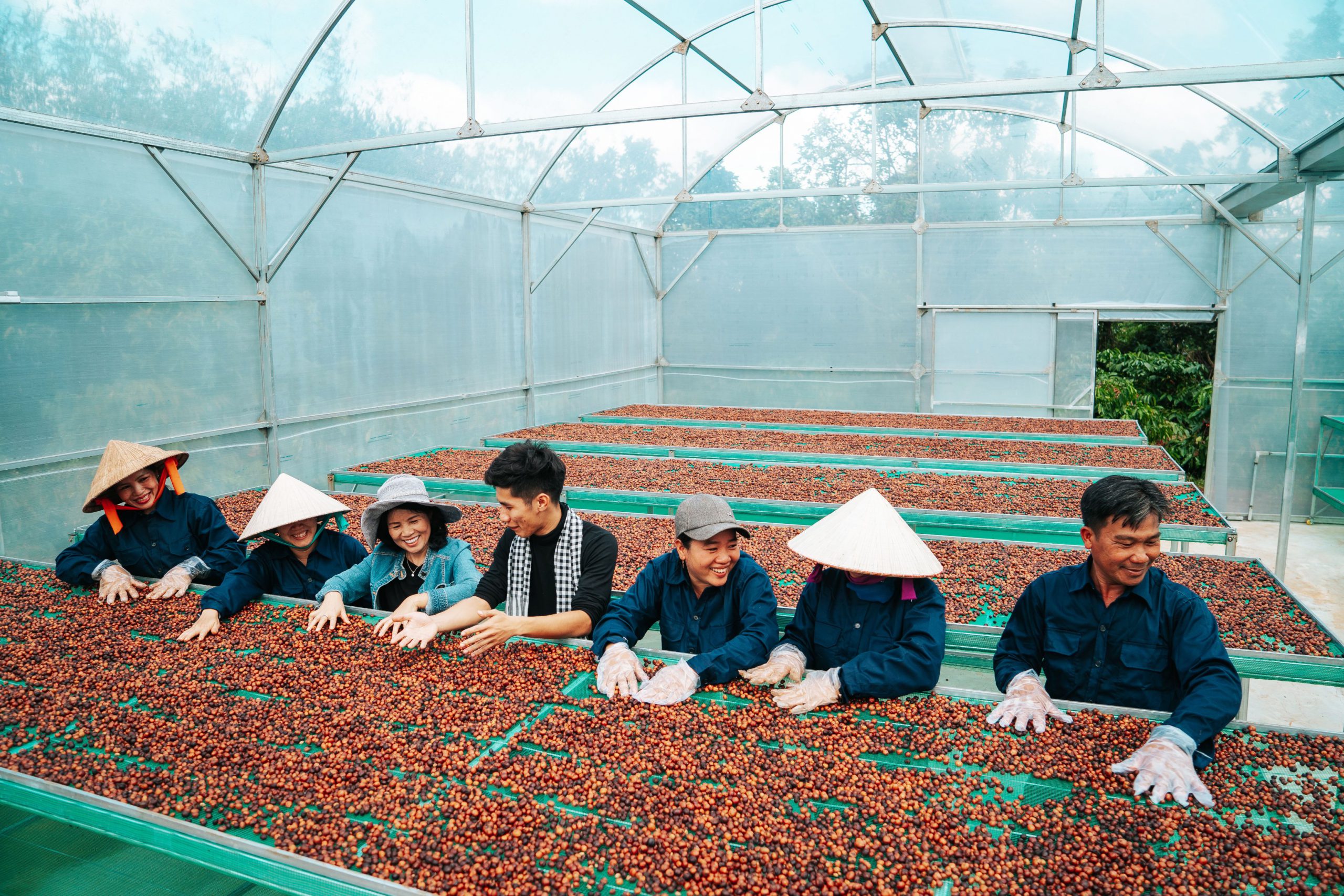Vietnam produces exceptional coffee that’s conquering global markets, from specialty espresso bars in Melbourne to cold brew chains in California. Yet most coffee startups fail within their first two years, not because of product quality, but due to preventable business mistakes.
After working with hundreds of coffee entrepreneurs importing Vietnamese beans, clear patterns emerge. The same errors repeat across continents and business models. Understanding these pitfalls before investing your capital can mean the difference between building a thriving coffee brand and joining the statistics of failed ventures.
1. Underestimating Real Startup Costs by 40-60%
New coffee entrepreneurs budget for the obvious expenses like equipment and inventory, then face financial shock when hidden costs emerge. A carefully planned $30,000 budget regularly balloons to $50,000 within six months.

The gap isn’t just miscalculation. It’s the accumulation of costs nobody warns you about until invoices arrive. Import duties add 30-40% above the FOB price when you factor freight, customs clearance, storage, and insurance. Professional services from accountants, lawyers, and insurance agents consume $3,000-5,000 annually. Quality testing, failed batches, and customer samples cost another $2,000-4,000 before you make your first sale.
Working capital creates the biggest surprise. Vietnamese coffee suppliers typically require full payment before shipment. Your container spends 30-45 days in transit. Customs clearance takes another week. You sell to wholesale customers on 30-day payment terms. That’s a 90-day cycle where your money sits locked in coffee beans while rent, utilities, and marketing bills arrive monthly.
Smart entrepreneurs build comprehensive spreadsheets tracking one-time setup costs, monthly fixed expenses, and variable costs per unit sold. They add a 30% contingency buffer and maintain six months of operating expenses in reserve. This isn’t pessimism, it’s survival planning. Coffee markets shift, shipments delay, and equipment breaks. Cash reserves buy time to solve problems instead of watching your business collapse from one unexpected expense.
Read more: Which Coffee Business Model Is Right for You: Roasting, Franchising, or Exporting?
2. Choosing Vietnamese Coffee Suppliers Based Only on Price
Every week, new importers contact multiple Vietnamese suppliers, compare quotes per kilogram, and order from whoever’s cheapest. Three months later, they’re dealing with inconsistent quality, missed shipments, and customers threatening to switch suppliers.
Price alone reveals nothing about what actually matters in coffee sourcing. A supplier offering beans at $2.20/kg versus $2.50/kg seems like easy profit math. But cheap coffee often means inconsistent screen sizes requiring extra sorting, higher defect rates creating waste, or mixing different origins that produce unpredictable roasting results. Your customers notice these variations immediately, even if you don’t catch them first.

Reliable Vietnamese suppliers distinguish themselves through transparency and support, not just pricing. They provide detailed specifications showing screen size distribution, moisture content, defect counts, and processing methods. They send pre-shipment samples from actual lots, not generic representations. They respond to questions within 24 hours and proactively warn about crop conditions affecting availability or quality.
The relationship matters even more than current transactions. When Vietnamese weather creates supply shortages, suppliers prioritize customers who’ve built partnerships over those who’ve shopped purely on price. When you need adjusted payment terms during cash flow challenges, relationship-based suppliers work with you while transactional ones demand immediate payment. That 10-15% premium for a proven supplier returns multiples in reliability, consistency, and support that cheap alternatives never provide.
Read more: Is Opening a Coffee Shop Profitable?
3. Ignoring Market Research Until After Launching Products
Coffee entrepreneurs love their personal taste preferences. They develop products based on what they enjoy drinking, then wonder why customers aren’t buying. The market doesn’t care about your preferences. It cares about solving its own problems and matching its own taste profiles.
Vietnamese Robusta faces unique positioning challenges in specialty markets that historically viewed it as inferior to Arabica. Yet high-quality Vietnamese Robusta delivers chocolate and nutty profiles with full body that’s perfect for espresso blends and cold brew applications. The question isn’t whether Vietnamese coffee is good, it’s whether your target customers understand and want what it offers.
Regional preferences vary dramatically and ignoring them kills businesses. North American specialty markets increasingly prefer light-medium roasts highlighting origin characteristics. European espresso-focused markets favor medium-dark Italian or French roast profiles. Asian markets split between very light floral notes or very dark roasts for traditional preparations with condensed milk. Middle Eastern customers want dark roasts with cardamom for traditional brewing methods.
Before finalizing products, conduct systematic taste tests with actual target customers, not friends and family who’ll be polite regardless of quality. Research what competitors successfully sell and at what price points. Study local coffee culture to understand consumption habits and preferences. Start with 2-3 versatile profiles that work across broader audiences, gather sales data for 3-6 months, then expand based on what actually sells rather than what you think should sell.
Read more: Should I open a franchise coffee shop?
4. Neglecting Cash Flow Management Until Money Runs Out
Revenue and cash are completely different concepts, but new coffee businesses treat them identically until reality hits hard. Strong sales don’t prevent bankruptcy if cash isn’t available when bills arrive.
Consider the typical cash flow cycle for coffee importers. Day one, you order a container and pay 30% deposit, around $13,500 on a $45,000 purchase. Day 30, you pay the remaining 70% before shipment. Day 45, your container arrives and customs charges $8,000 for duties, storage, and clearance. You’ve now invested $53,000 and haven’t sold a single bag.

Day 60, you start selling to coffee shops offering standard 30-day payment terms. Day 90, you finally receive payment from customers. During those 90 days, rent continued monthly. Utilities didn’t pause. Marketing expenses accumulated. Salary obligations remained constant. Without substantial cash reserves, even profitable sales create cash shortages that prevent ordering the next container.
Successful coffee businesses implement rigorous cash flow forecasting with six-month rolling projections. They track when money actually enters and exits accounts, not just when sales and expenses occur on paper. They negotiate favorable payment terms with Vietnamese suppliers, exploring letters of credit, partial pre-payment structures, or extended terms as relationships develop. They incentivize customers with 2% discounts for payment within 10 days, significantly improving cash position.
The counterintuitive solution often means starting smaller. Ordering half containers more frequently costs more per kilogram but preserves cash flow flexibility. In year one, cash flow flexibility typically matters more than maximizing volume discounts. You can optimize unit economics after surviving to year two.
Read more: 7 Essential Experiences for Opening a Successful Coffee Shop
5. Operating Without Quality Control Systems
The first sample from your Vietnamese supplier cups beautifully. You assume every subsequent shipment will match. Six months later, customers complain about inconsistent flavor and you realize the last three containers varied significantly in quality.
Coffee is agricultural, meaning natural variation is inevitable. Vietnamese suppliers might process beans slightly differently between batches. Seasonal changes from new crop to old crop affect characteristics. Temperature and humidity during shipping impact beans before arrival. Warehouse mix-ups happen when staff accidentally combine different lots. Without systematic quality control, you discover problems only after customers complain and your reputation suffers.
Establishing quality protocols starts before shipment. Request pre-shipment samples from the actual lot being shipped, not generic samples from months earlier. Cup these samples using standardized protocols and verify specifications match your purchase agreement regarding screen size, moisture content, and defect rates. Document everything with photos and detailed cupping notes.
When containers arrive, immediately cup representative samples and check for shipping damage, moisture issues, or contamination. Continue random quality checks throughout inventory usage and track customer feedback systematically. Compare cupping notes over time to identify quality drift before it becomes crisis. Share results with your Vietnamese supplier, both positive and negative feedback. This communication loop builds data improving sourcing decisions and strengthens supplier relationships through collaborative problem-solving.
Quality control isn’t defensive expense. It’s offensive strategy creating competitive advantage through consistency that customers value and pay premium prices to secure.
6. Building Weak Supplier Relationships and Avoiding Contracts
New importers treat Vietnamese coffee suppliers like interchangeable vendors, switching for 5% price differences and operating on informal email agreements. This transactional approach works fine until problems emerge, then suddenly you discover relationships matter enormously.
Coffee sourcing involves inevitable challenges. Crop failures reduce availability. Shipping delays disrupt schedules. Quality varies seasonally. Currency fluctuations affect pricing. Market conditions shift unexpectedly. When these situations arise, strong supplier relationships determine whether you navigate successfully or face business-threatening disruptions.

Suppliers operating on transactional relationships have no incentive to prioritize your orders during tight supply. They offer no flexibility when you need adjusted payment terms. They provide no advance warning when crop issues affect quality. They invest no time supporting your business or troubleshooting problems. You’re just another order number competing purely on price with hundreds of other buyers.
Strategic partnerships require investment but return multiples in value. Formalize agreements with written contracts specifying quality standards, pricing mechanisms, payment terms, and delivery schedules. Include clear remedies for quality failures and communication protocols for problem resolution. Visit Vietnam if possible to see operations firsthand and build personal connections. Schedule regular video calls beyond placing orders. Share your business plans so suppliers understand your needs and can anticipate requirements.
Create mutual value by providing market intelligence from your region, collaborating on product development for local preferences, and growing volumes with proven partners as your business scales. Pay on time consistently, which surprisingly differentiates you from many buyers. When supply tightens, you receive allocation. When you face challenges, they work with you. When you want special products, they invest time helping. These advantages far exceed any savings from constantly switching suppliers for marginal price differences.
7. Launching Without Marketing Strategy or Sales Process
The “build it and they’ll come” fantasy dies hard. New coffee businesses launch with minimal marketing budgets, assuming product quality creates organic growth through word-of-mouth. Months later, excellent Vietnamese coffee sits in warehouses while competitors with inferior products but superior marketing thrive.
Coffee markets are saturated and competitive. Without proactive marketing and systematic sales efforts, even exceptional products remain invisible. Hope isn’t strategy, it’s wishful thinking that depletes cash reserves while waiting for customers that never arrive.
Digital presence establishes credibility before customers risk purchasing. An SEO-optimized website with content about Vietnamese coffee origins, brewing guides, and educational articles attracts organic traffic searching for coffee information. Email marketing builds lists of interested prospects who receive valuable content nurturing them toward purchase decisions. Consistent social media posting shares coffee education, behind-the-scenes operations, and customer stories that build community and trust.
For wholesale businesses targeting coffee shops and retailers, outbound sales require systematic processes. Identify ideal customer profiles matching your product positioning and price points. Create targeted outreach sequences combining email, phone calls, and LinkedIn messages. Send curated samples with professional presentations and technical specifications showing exactly what makes your Vietnamese coffee special. Track all interactions in CRM systems and follow up persistently but professionally.
Content marketing positions you as Vietnamese coffee experts rather than just another supplier. Create blog posts about Vietnamese coffee regions, processing methods, and brewing techniques. Produce video content showing cupping sessions, roasting processes, or farm visits. Develop comparison guides explaining Vietnamese Robusta’s advantages for specific applications like espresso or cold brew.
Allocate 10-15% of projected first-year revenue to marketing and sales activities. For $200,000 revenue targets, that’s $20,000-30,000 in marketing investment. Track return on investment carefully and double down on channels proving effective while cutting underperforming efforts. Most successful coffee businesses succeed not because they have the absolute best coffee, but because they market and sell more effectively than competitors with equal or better products.
The path from coffee startup to sustainable business isn’t easy, but it’s navigable for those who prepare properly and avoid the critical errors that derail most ventures. Use these insights to build your foundation, then focus on what matters most: delivering exceptional Vietnamese coffee to customers who appreciate quality and building relationships that sustain your business through inevitable challenges.
